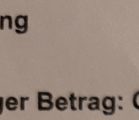
Harvey Weinstein: Corporate cultures of fear.
The revelations about this despicable behaviour hopefully send clear warnings to other perpetrators that they are on borrowed time. For SUISHARE the interesting issue is at the mechanics, particularly the domino effect of how this wall of silence was brought to fall.
How was it that Harvey Weinstein‘s behaviour continued unchallenged for so long. After all, the predatory behaviour was an open secret in Hollywood, perpetuated by a culture of silence, and the occasional “joke” making light of Harvey Weinstein‘s behaviour.
Once the scandal broke, millions of people around the world from all walks of life have been inspired to share stories of their harassment and abuse at the hands of powerful people.
The recurring themes are familiar: a vulnerable target (such as an employee), a powerful perpetrator, fears of retaliation, losing one’s livelihood and people who know but look the other way. We've heard it all before.
There are pressing questions. Who is at fault for the cultures of silence that are built up within organisations? Is the fault institutional? Weinsteinesque behaviour is often mirrored in corporate cultures.
Where companies do not have zero tolerance for misbehaviour, dalliances of executives are swept under the carpet, and because misbehaviour is possible and uncontrolled, it spreads. Equal culprits are the powerful allies of the perpetrators, the fellow executives and the Board. There is then a trickle down to lower layers of complicity, bystanders, some directly implicated – the lawyers, the fixers, internal buddies, who have a fair idea of what is going on, but directly or indirectly profit, so are willing or subtly coerced to look the other way, particularly when a substantial bonus is dangled for not rocking the boat. Employees joke about „performance management“.
In terms of both ethics and effectiveness, it would obviously be a better world if „bystanders“ spoke out. This is a major aim of SUISHARE, to give people who see misbehaviour a safe way to report it and begin to break down walls of silence and intimidation.
There are many reasons why people would look the other way
- Fear of retaliation from the perpetrator.
- Loosing ones livelihood.
- Fear of not being believed.
- Lack of trust in company reporting lines as being perceived as aimed at protecting perpetrators
- Scared that their experience would be dismissed or trivialized.
- Belief the incident wasn't serious enough to tell anyone about.
- Believing there was nothing that could be done about it.
- Easier and less confrontational to move on and forget the incident.
The cultural shift away from accepting misbehaviour, or seeing it as a “joke“ lies partly in seeing its wider effect. It stops employees from putting ideas forward in the workplace, avoiding particular tasks, disengagement, distrust of internal processes and regulations, demoralisation and in some cases, leaving their job altogether.
The psychology behind this kind of thing is not that complex; misbehaving people in power know how to construct cultures of fear.
The amount of cognitive dissonance it must take for corporate executives to say „we have guidelines“ while at the same time doing nothing in enforcement and accountability is astounding. This “conducive context” is created by complicity on many levels.
Institutions have a huge amount of work to do in establishing a zero-tolerance to harassment, and in having safeguards, transparent policies and processes.
All business leaders and entrepreneurs have something to learn from the salutary lessons of the tawdry Weinstein case.



